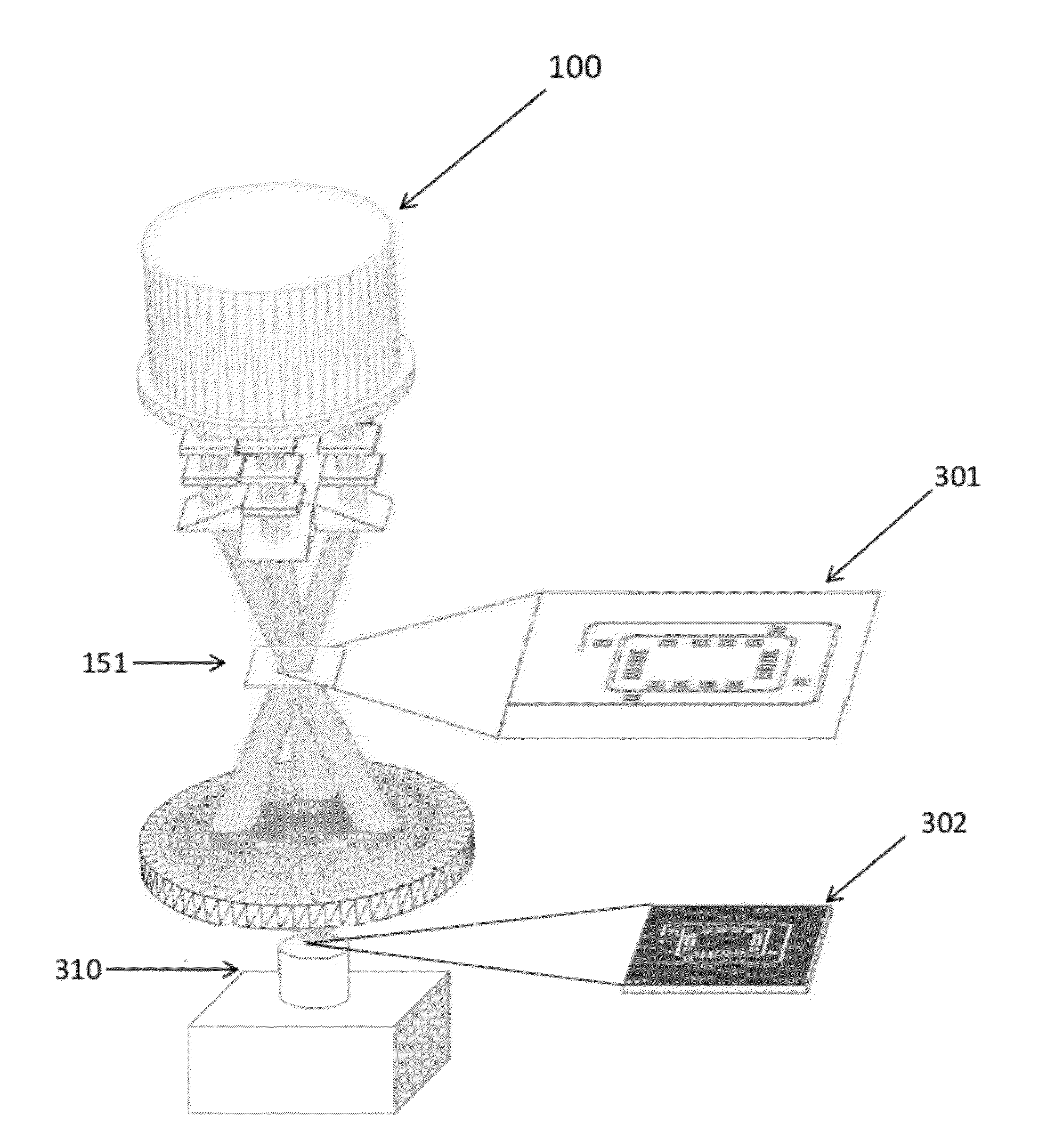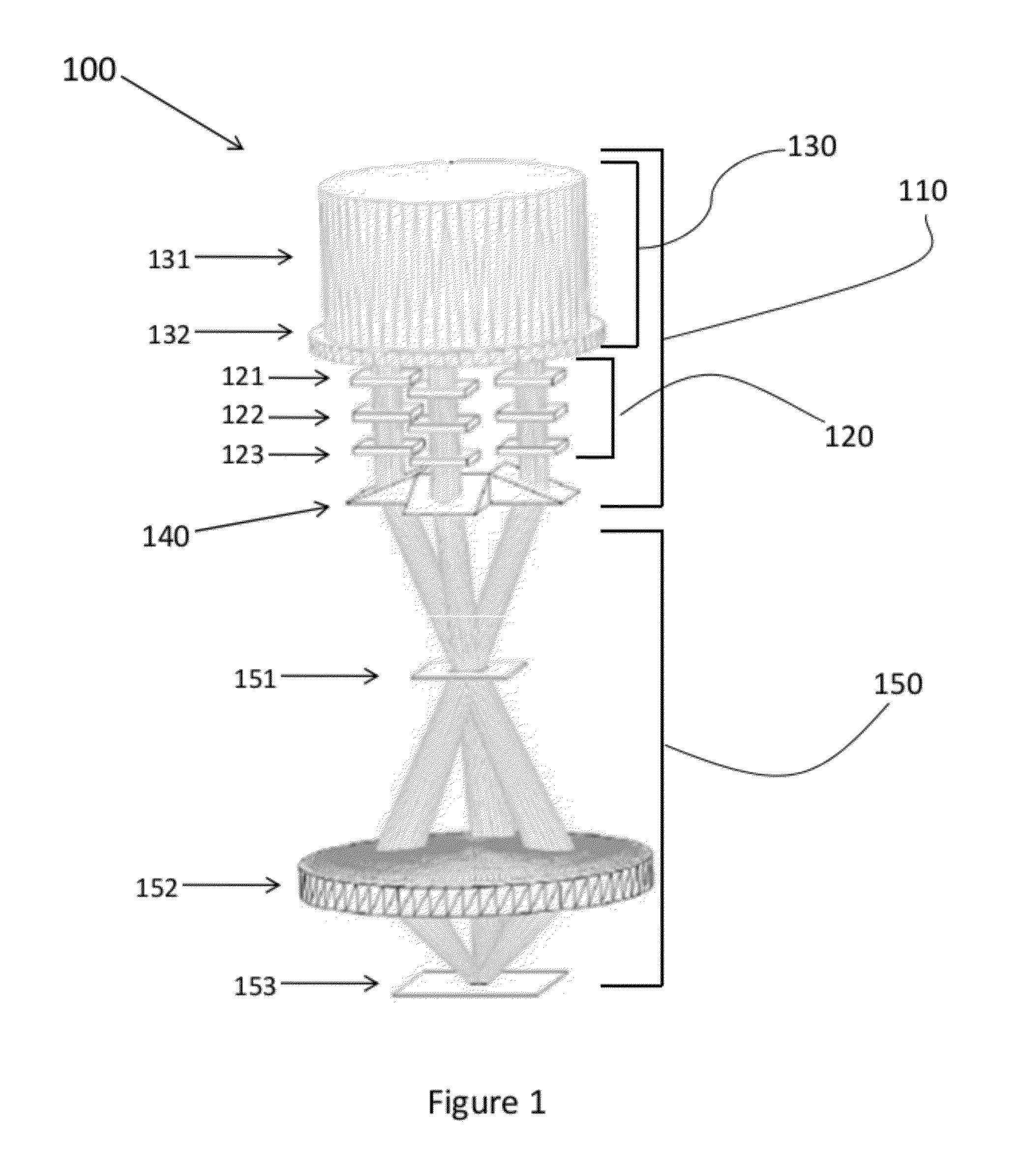Interference projection exposure system and method of using same
an exposure system and projection technology, applied in the field of interference and projection exposure systems, can solve the problems of reducing the wavelength of the source (e.g. from 192 nm to 157 nm) and the serious doubt that conventional optical lithography can continue to provide the needed decreasing size, and the potential lossless control of light propagation at a size scal
- Summary
- Abstract
- Description
- Claims
- Application Information
AI Technical Summary
Benefits of technology
Problems solved by technology
Method used
Image
Examples
example 1
[0095]A conceptual three-beam interference projection exposure system (IPES) configuration is depicted in FIG. 6. FIG. 6 shows a three-beam interference projection exposure system, including (a) the configuration of wavevectors k1, k2, and k3, used to produce a square-lattice interference pattern with a lattice constant α=λ / (√{square root over (2)}sin θ); (b) a ray trace diagram that depicts the propagation of k2 and k3 through the multi-beam illumination system that ensures that the beams illuminate the functional element mask and focus at the back focal plane of the objective lens. The interfering beams are collimated and intersect at the sample plane at a distance s′, forming an all-surrounding square-lattice pattern; (c) the functional element mask which is placed at a distance s from the objective lens with minimum mask features sizes of d=a / 1 ml, where m=−s′ / s; and (d) the resultant optical-intensity distribution of low-spatial-frequency, non-periodic functional elements in an...
example 2
[0117]FIGS. 21 and 22 provide examples of photonic crystal lattices of pins and holes that can be made using a source wavelength of 363.8 nm at an incidence angle of 26.39° for each interfering beam at the substrate recording plane. FIG. 23 provides an example of a three-dimensional metamaterial structure at the micron scale that can be made, while FIG. 24 depicts a biomedical structure with lattice spacing on the order of 100 nm that can be made.
PUM
 Login to View More
Login to View More Abstract
Description
Claims
Application Information
 Login to View More
Login to View More - R&D
- Intellectual Property
- Life Sciences
- Materials
- Tech Scout
- Unparalleled Data Quality
- Higher Quality Content
- 60% Fewer Hallucinations
Browse by: Latest US Patents, China's latest patents, Technical Efficacy Thesaurus, Application Domain, Technology Topic, Popular Technical Reports.
© 2025 PatSnap. All rights reserved.Legal|Privacy policy|Modern Slavery Act Transparency Statement|Sitemap|About US| Contact US: help@patsnap.com



